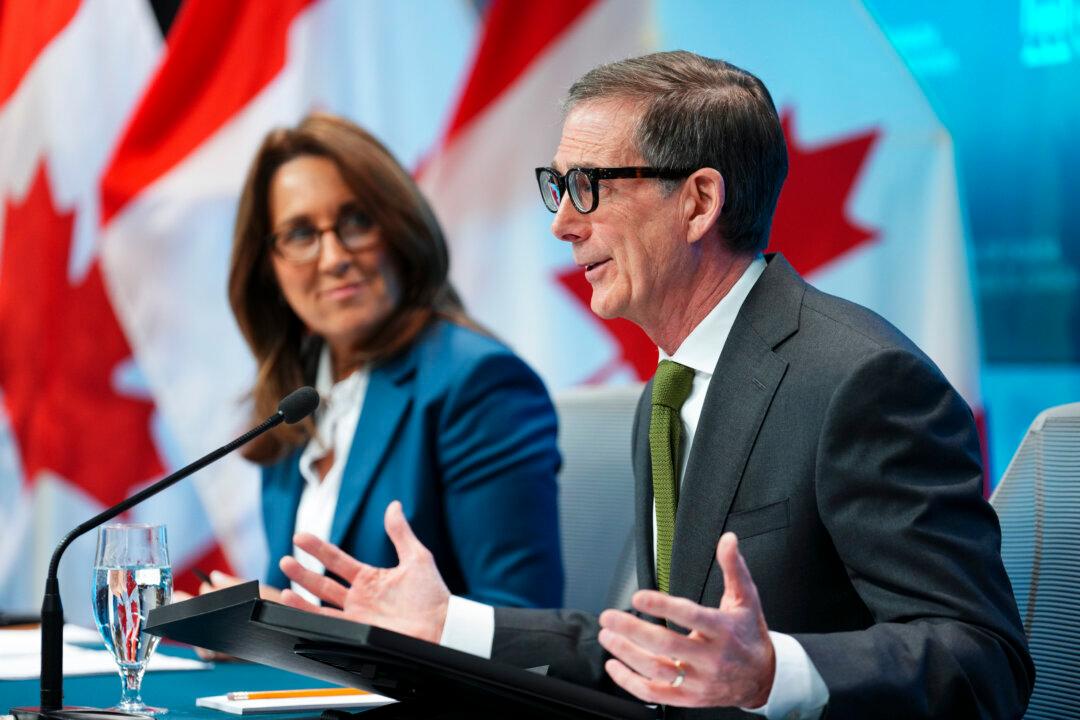OTTAWA—In anything but an obvious decision, the Bank of Canada held its key rate unchanged on Wednesday, Jan. 20.
Two days prior, financial markets were pricing in a 63 percent chance of a rate cut and many economists were calling for one.
“Our deliberations began with a bias toward further monetary easing,” said Bank of Canada governor Stephen Poloz in his press conference speech.
But despite the turmoil in financial markets to start 2016 and a disappointing fourth quarter, key to the BoC’s decision to hold the overnight rate target at 0.50 percent is the inflation outlook staying in the “neutral zone” and the impending federal infrastructure spending giving a helping hand to the economy.
And the bank doesn’t view the recent global turmoil as something that could significantly affect global growth. “The dynamics of the global economy are broadly as anticipated in the Bank’s October Monetary Policy Report (MPR),” according to the BoC’s Jan. 20 press release.
The central bank is sanguine regarding China’s economic growth—a hotly debated topic. The BoC expects it to transition to roughly 6 percent growth in 2017. The latest official reading is 2015 growth of 6.9 percent.
The U.S.’s wobble in the fourth quarter is just that. Slower exports to the U.S. pulled down Canada’s fourth quarter growth, but given the strong employment gains last year and high consumer confidence, the bank expects U.S. growth to be close to 2.5 percent in 2016.
The narrative of the Canadian economy undergoing a multi-year transition as the resource sector shrinks and the non-resource sector expands is still intact.
In his speech, Poloz called the adjustment process “personal,” as it’s “disrupting the lives of many Canadians, whether through job losses or through higher prices for imported goods.”
“We expect that as long as indications that the economy’s transition is proceeding persist, the bank will maintain the current level of policy accommodation,” said RBC deputy chief economist Dawn Desjardins in a note.
Falling Loonie
The Canadian dollar has dropped more than 10 percent in the last three months. In 2016 alone, it has dropped nearly 5 percent. While a weak loonie benefits the export sector and helps inflation reach its 2 percent target, the rapid drop is of concern.
“When a large depreciation occurs over a short period, the pass-through to prices could be relatively rapid and thus have a greater impact on annual inflation,” according to the BoC’s January MPR.
“We might be at a point in which the marginal damage of a lower dollar outweighs the benefit,” said CIBC in a note.
The BoC now expects the economy to return to above-potential growth in the second quarter of 2016. This may seem like setting up for a repeat of early last year before oil prices fell further.





